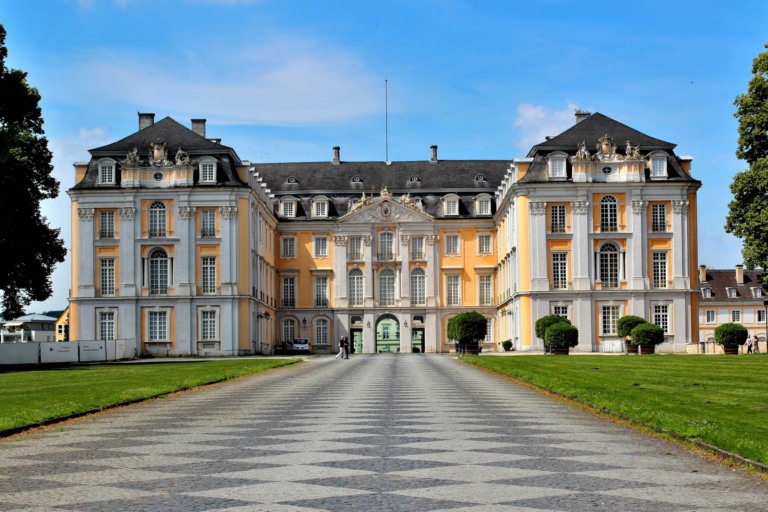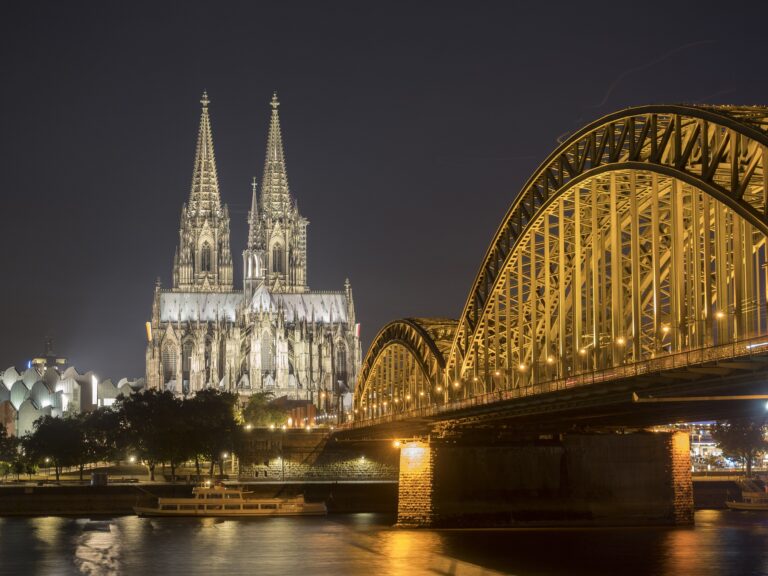Aachen Cathedral, or Aachener Dom, stands as a historic Roman Catholic church with a storied past in Aachen, Germany. Its roots trace back to the era of Charlemagne, who commissioned the cathedral’s construction and was later interred there in 814. As one of Europe’s oldest churches, Aachen Cathedral played a pivotal role in the annals of the Holy Roman Empire.
Aachen Cathedral History
1. Early History: Over the course of history, the cathedral served as the hallowed ground for the coronations of thirty-one German kings and twelve queens. This tradition spanned from 936 to 1531, predominantly occurring in the Palatine Chapel.
Notably, in 1978, Aachen Cathedral received the distinction of being among the inaugural twelve UNESCO World Heritage Sites. This esteemed recognition was conferred for its exceptional contribution to the history of the Holy Roman Empire and its architectural and artistic significance.
2. Palatine Chapel: The construction of the Palatine Chapel and other sections of the palace commenced around 796, under the patronage of Charlemagne and the design of Odo of Metz. The exact completion date remains elusive, yet in 805 AD, Pope Leo III consecrated the fully finished chapel.
3. Significance: In the late 8th century, Aachen acquired a foundry specializing in crafting metalwork such as doors, railings, and statues. Among its creations is the metal pine cone that still graces the chapel. It is conjectured to have been produced at this foundry or transported from Rome. In 814, Charlemagne’s burial in Aachen Cathedral heightened its significance.
4. Viking raids: A setback unfolded in 881 when Viking raids inflicted substantial damage upon the cathedral. Repairs only began in 983. The year 1165 marked an important turning point as Antipope Paschal III canonized Charlemagne, attracting pilgrims to the chapel.
Subsequently, a Gothic choir hall was added in 1355, and a two-part glass chapel commemorating the 600th anniversary of Charlemagne’s death was dedicated. Further expansions included the addition of a cupola, several churches, and a steeple. In 1881, the restoration of the original chapel involved removing the baroque stucco.
5. World War II Damage: Aachen Cathedral weathered the storms of World War II, enduring significant damage from Allied bombings and artillery fire. However, its core structure remained resilient. Many of the cathedral’s invaluable artworks were safeguarded during the conflict, with the cathedral serving as a refuge for those that couldn’t be relocated. Tragically, some elements, including the 14th-century choir hall windows, the Neo-Gothic altar, a substantial portion of the cloister, and the Heiligtumskapelle (Holiness Chapel), suffered irreparable damage.
Aachener Dom Facts
6. Reconstruction: The arduous process of reconstruction unfolded intermittently over more than three decades, incurring an approximate cost of €40 million. To this day, Aachen Cathedral stands as a testament to its historical and cultural significance, symbolizing both its architectural and spiritual import.
7. Coronation Site: The cathedral also holds a distinctive place in history as the coronation site for German kings. Charlemagne initiated this tradition by having his son, Louis the Pious, crowned within its walls. Between 936 and 1531, a total of 30 out of 40 German kings received their coronations at the cathedral.
This ceremonial process unfolded at the High Altar, followed by the newly crowned king being seated on the Aachen Throne, which remains on display to this day. During this era, it’s notable that all German kings, regardless of the site of their coronation, would occupy Charlemagne’s throne.
8. Aachen Pilgrimage: The Aachen pilgrimage, known as the “Aachener Heiligtumsfahrt,” finds its origins in 1238. This pilgrimage offers believers the opportunity to view the four most important religious relics housed within the cathedral.
These relics have been presented every seven years since 1349, with the most recent pilgrimage, under the slogan “Geh in das Land, das ich dir zeigen werde” (“Go to the land that I will show you”), taking place in 2014. This slogan invokes the biblical account of Abram’s call, where the Lord instructed Abram to leave his homeland and embark on a journey to an undisclosed place.
9. Essen Minster: From an architectural vantage point, Aachen Cathedral has served as an inspiration for numerous churches and edifices, including Essen Minster, the Old Tower in Mettlach, and the Alsatian Abbey Church of Ottmarsheim. These structures sought to emulate its design. In 2007, both the octagon and the choir of Aachen Cathedral received recognition as historic landmarks of German civil engineering.
10. UNESCO Site: Aachen Cathedral, also known as the Cathedral of Aachen or the Imperial Cathedral of Aachen, stands as a distinguished UNESCO World Heritage site in Germany. Nestled in the city of Aachen in western Germany, this cathedral embodies profound historical and architectural import.
11. Charlemagne Era: The cathedral’s origins can be traced to the era of Charlemagne, the Frankish king and Holy Roman Emperor. Charlemagne aspired to establish his imperial capital in Aachen, selecting the location to construct his palace chapel. The chapel’s construction commenced around 792 AD, ultimately evolving into the impressive cathedral we encounter today.
12. Architectural styles: Aachen Cathedral represents a captivating amalgamation of architectural styles. It primarily exhibits Carolingian architecture, reflecting the distinctive style of the Carolingian dynasty. Core features, such as the Palatine Chapel and the Octagon, epitomize the Carolingian style, characterized by its elegant simplicity, balanced forms, and robust geometric designs.
The Palatine Chapel, often referred to as the Palatine Basilica, takes center stage within the cathedral. Its octagonal form, crowned by a soaring dome upheld by majestic columns, stands as an architectural marvel. The chapel’s interior boasts intricate mosaics illustrating biblical narratives, underscoring the grandeur and significance of the Carolingian Empire.
13. Expansions: Over time, Aachen Cathedral witnessed several expansions and additions, incorporating elements from various architectural styles. The Gothic choir, an addition from the 14th century, and the baroque choir stalls are notable examples of these later enhancements.
14. Cathedral Treasury: Beyond its architectural splendor, Aachen Cathedral is celebrated for its rich historical and cultural associations. It served as the coronation site for numerous German kings and emperors, with Charlemagne himself being crowned within its sacred confines. The cathedral’s treasury houses precious relics, including the Charlemagne Shrine, which safeguards the remains of the great emperor.
15. Tourism in Aachen: A visit to Aachen Cathedral allows visitors to immerse themselves in the grandeur of the Carolingian era and witness the fusion of architectural styles spanning centuries. Its designation as a UNESCO World Heritage Site acknowledges its profound cultural and historical value, making it an essential destination for enthusiasts of history and architecture alike.


